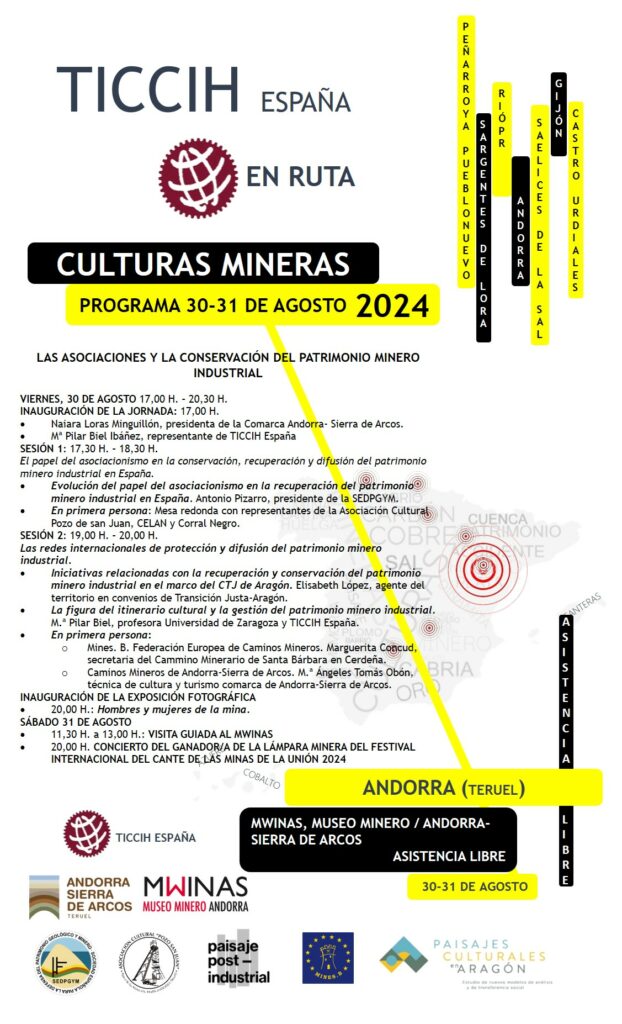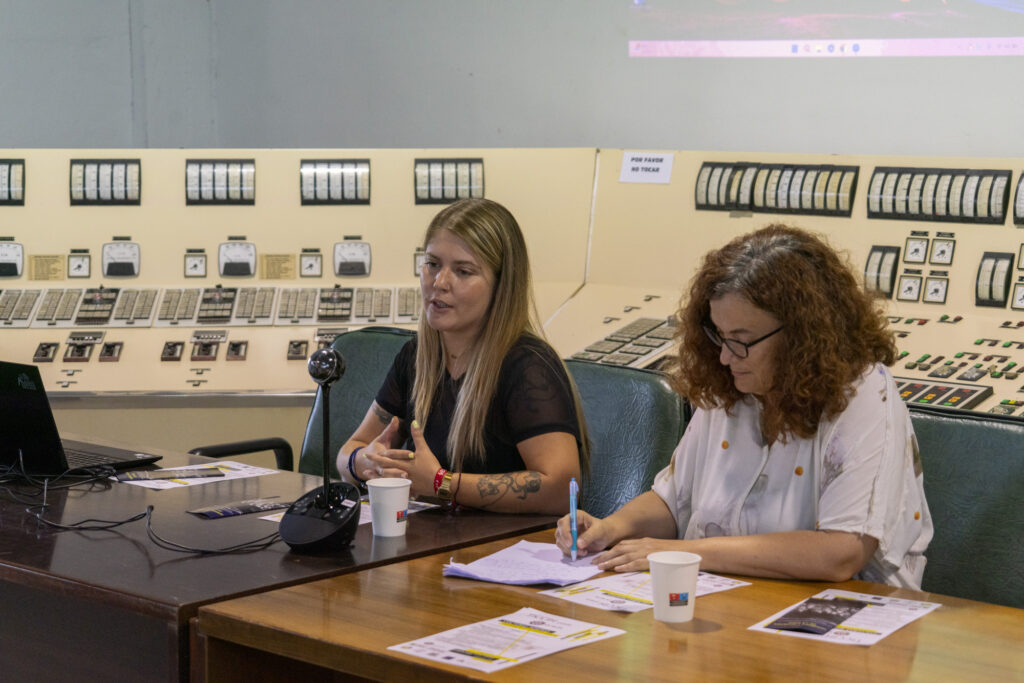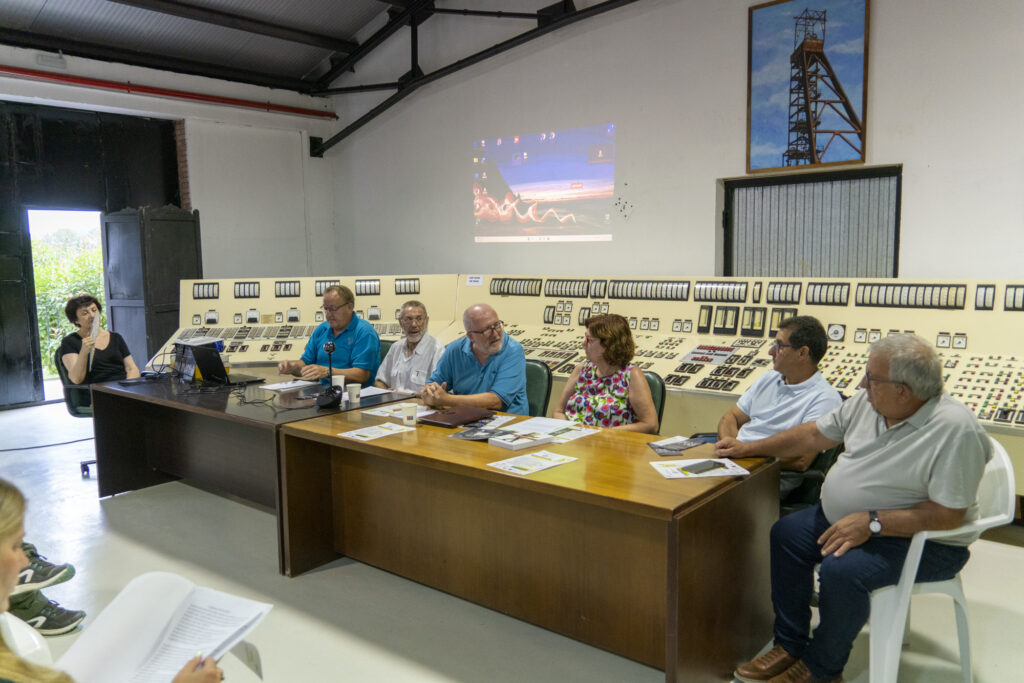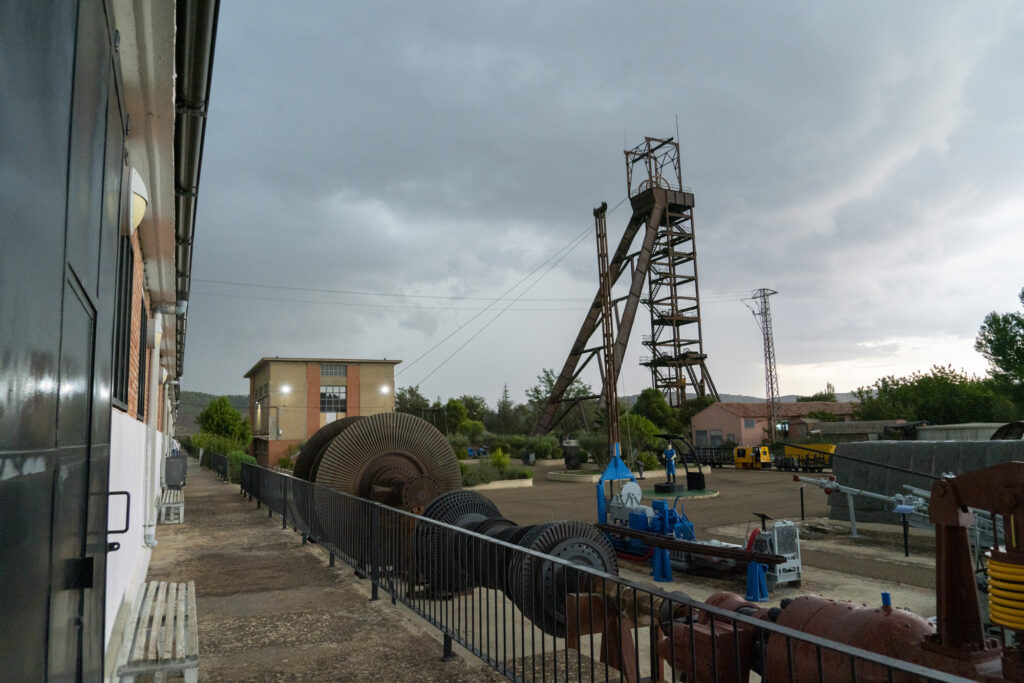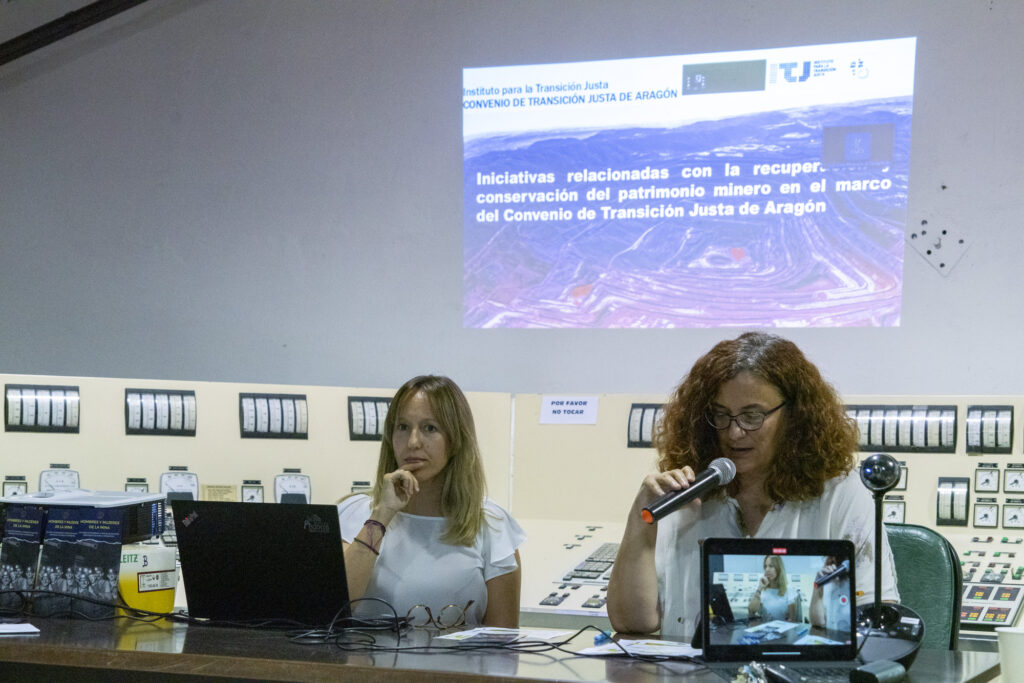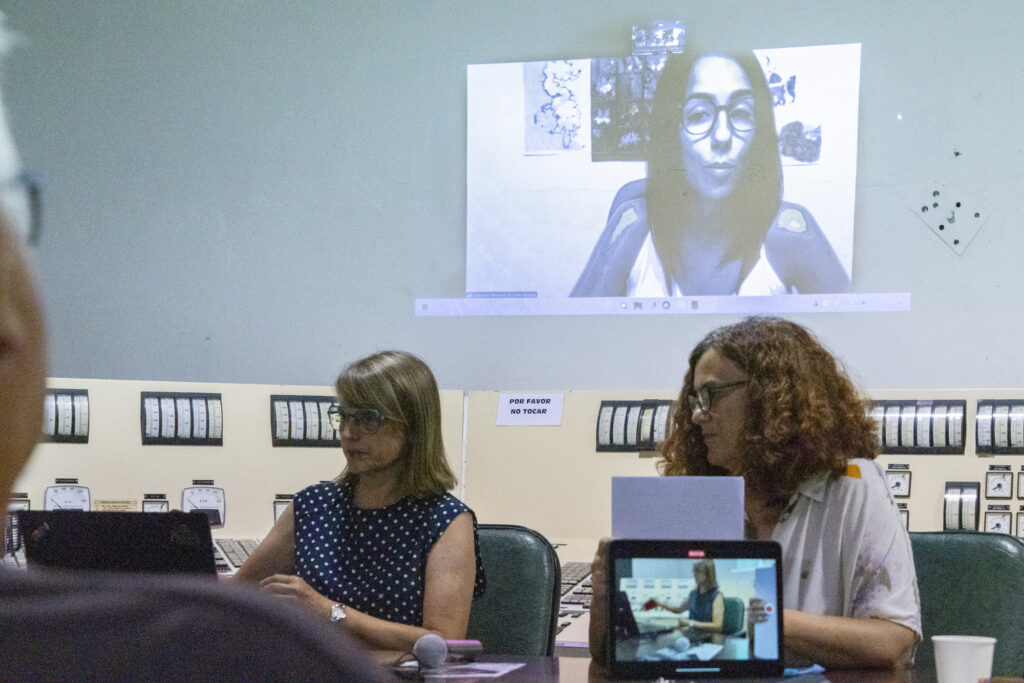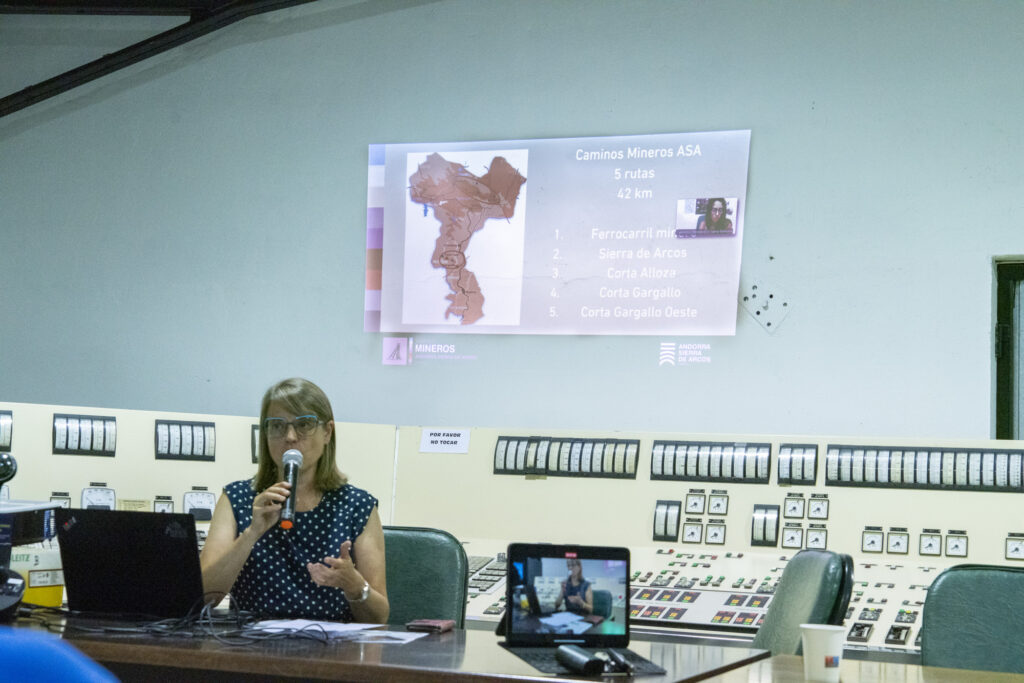On the 30 of August, the Comarca Andorra Sierra de Arcos hosted one of the days of the itinerant programme Culturas Mineras, promoted by the International Committee for the Conservation and Defence of Industrial Heritage (TICCIH). This event focused the debate on the role of associationism in preserving the heritage of the glorious mining era.
The Culturas Mineras programme aims to explore and celebrate the richness and diversity of mining traditions that have marked the history of these territories and continue to influence their present. After stops in Sargentes de la Lora (Burgos) and Riópar (Albacete), the initiative came to Andorra with the aim of fostering the exchange of ideas and experiences between heritage experts, academics, professionals, volunteers and history enthusiasts.
Among the participants were members of the Pozo de San Juan Cultural Association who shared their experience. Their efforts, in collaboration with the Comarca, are crucial for the preservation of the mining heritage, especially at the Mining Museum of the region, an area that saw the closure of the thermal power plant in 2020 and the last coal mines in 2018.
Also present is the Corral Negro association, which, in Ariño, is the main promoter of the protection of the coal heritage. The Centro de Estudios Locales de Andorra (CELAN), which covers the entire Comarca, also plays an important role in the research and dissemination of the area’s industrial memory. These organisations featured in a panel discussion moderated by Antonio Pizarro, president of the Sociedad Española para la Defensa del Patrimonio Geológico y Minero.
During the meeting, international networks dedicated to the protection and dissemination of industrial mining heritage were also discussed. Speakers included Elisabeth López, territorial agent of the Convenio de Transición Justa de Aragón, and María Pilar Biel, professor at the University of Zaragoza and representative of the TICCIH in Spain. Marguerita Concu, secretary of the Cammino Minerario di Santa Barbara Foundation also spoke.
Finally, the Comarca’s Culture and Tourism Technician and Vice-President of the MINES.B Federation, Maria Angeles Tomás Obón illustrated the Caminos Mineros project, the future mining routes that will be included among the proposals of our European Mining Routes of Santa Barbara Federation. In fact, the project of the Comarca Andorra-Sierra de Arcos envisages the upgrading of 42 kilometres of Mining Routes to allow people to explore, on foot and by bicycle, its most characteristic industrial heritage. This is a unique project financed by the Institute for Just Transition with 500,000 euros, which aims to differentiate the tourist offer. The project covers the Ferrocarril Minero Andorra-Escatrón, with 7.5 kilometres in Andorra; Sierra de Arcos, with 20 kilometres between Andorra, Alloza and Ariño; Corta Alloza, with 1.5 kilometres in Alloza; Corta Gargallo, with 4.5 kilometres in Gargallo; and Corta Gargallo Oeste, with 8.5 kilometres in Estercuel, as well as a multimedia communication and promotion project. All this will be completed by the autumn of 2025.
The Mining Museum of Andorra (MWINAS) is hosting until 20 September the travelling exhibition ‘Men and Women of Mining’, a photographic journey celebrating the shared identity of the mining world. This exhibition represents the first joint activity of the European Mining Routes of Santa Barbara Federation – MINES.B.
The exhibition, which has already stopped in Slovakia and Slovenia, will next travel to Belgium.
